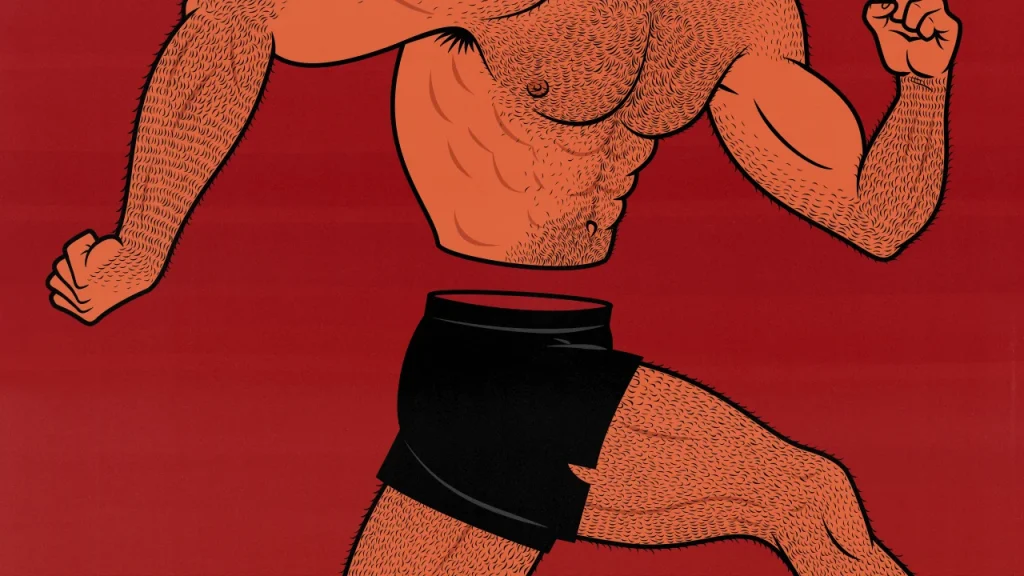
The Best Upper/Lower Workout Split for Building Muscle
When I first met Marco, he had just finished studying under Eric Cressey, the head strength coach for the New York Yankees, and was working as the strength coach for professional football and rugby players. He had almost all of them on an Upper/Lower Workout Split.
The classic Upper/Lower Split has two lower-body workouts and two upper-body workouts, giving you four workouts per week. It’s a balanced routine, but it works your lower body harder than most bodybuilding routines, making it a great choice for athletes, especially if your sport is built around running.
You can also add a fifth workout, adding more emphasis to the muscles you’re most eager to grow. For most men, that means adding a third upper-body workout. For many women, that means adding a third lower-body workout.
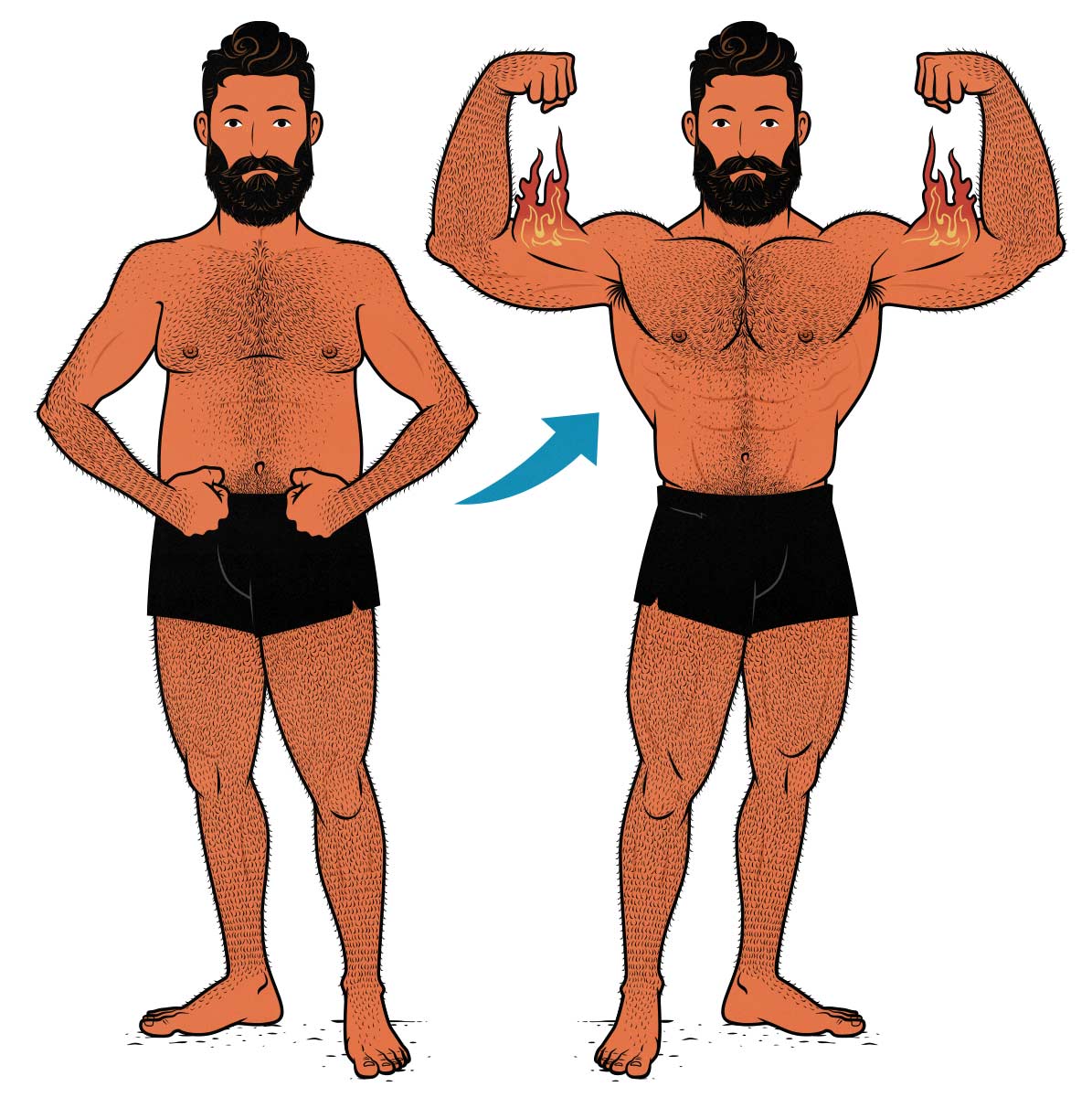
What’s an Upper/Lower Workout Split?
An Upper/Lower split divides your body in half, training your upper body one day and your lower body the next. This lets you train two days in a row while still giving your muscles plenty of time to recover.
The upper-body workouts train:
- Chest: Push-ups, bench presses, dips, and chest flyes.
- Back: Pull-ups, pulldowns, pullovers, and rows.
- Shoulders: Overhead presses, incline presses, and lateral raises.
- Arms: Biceps curls, triceps extensions, and forearm curls.
- Forearms: Wrist curls and extensions.
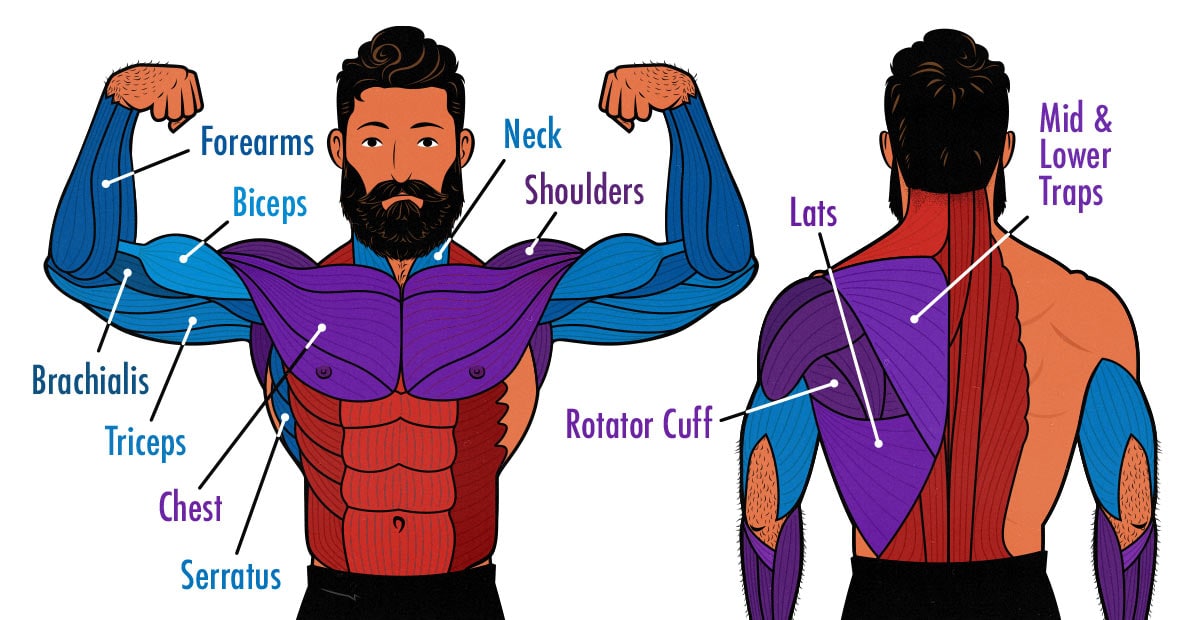
The lower-body workouts train:
- Quads: Squats, leg presses, and leg extensions.
- Glutes: Squats and deadlifts.
- Hamstrings: Romanian deadlifts and leg curls.
- Calves: Calf raises.
- Abs: Crunches and leg raises.

If we had a sword, we might be able to cleave your body perfectly in two, but we have weights, so we can’t be nearly so precise. Deadlifts are one of the best exercises for bulking up your back, yet they’re included in lower-body workouts. This means your back will often be trained twice in a row. That isn’t a problem. We just need to program around it.
You’ll notice that none of these exercises train your neck. You can put neck exercises into either workout. I usually put them in my lower-body workouts.* You might not put them anywhere at all.
The Advantages of Upper/Lower Splits
The main advantage of an upper/lower split is that you can train two days in a row without training the same muscles two days in a row. It’s a great way to balance stress and recovery. There are a few other advantages:
- Energy! Training half your body is half as tiring as doing full-body workouts.
- Supersets: You’re training several different muscle groups every workout, allowing you to do antagonist-paired supersets. You can superset chin-ups with overhead presses and push-ups with rows. You can do sets of leg raises while resting between sets of squats.
- Frequency: You can maximize your rate of muscle growth by training your muscles 2–3 times per week. Upper/Lower Splits make that easy.
- Volume: When you add a 4th or 5th workout to your routine, you have time for more exercises and sets, allowing you to stimulate more muscle growth.
- Strength: Most upper/lower splits have more emphasis on developing strength and athleticism than the typical bodybuilding “Bro Split.”
- Athletics: When you have dedicated lower-body workouts, you have more time for unilateral exercises like split squats, lunges, and step-ups. You can develop strength in more planes of movement. You can even add sprints or plyometrics.
The 4-Day Upper/Lower Split
This is the type of workout split Marco uses with athletes. 4-day upper/lower workout splits put half the emphasis on your lower body and half on your upper body. They’re great for improving athletic performance. They also fit neatly into the standard workweek:
- Monday: Lower Body
- Tuesday: Upper Body
- Wednesday: Rest or Cardio
- Thursday: Lower Body
- Friday: Upper Body
- Saturday: Rest or Cardio
- Sunday: Rest
One of the advantages of this workout split is that you can use undulating periodization. Your first two workouts can be heavier, focusing on strength and performance. The last two workouts can be lighter, focusing on muscle size and work capacity.
Lower-Body Workout (Strength)
| EXERCISE | SETS | REPS |
|---|---|---|
| Deadlifts | 4 sets | 5 reps |
| Squats | 4 sets | 5 reps |
| Leg Press | 3 sets | 8 reps |
| Step-Ups | 3 sets | 10 reps |
This is the heavier lower-body day, so the main emphasis is on getting strong at squats and deadlifts. The leg press gives your quads some extra volume. Step-ups are a similar movement pattern to the deadlift, but they train your legs unilaterally—an important part of training for sports performance.
Upper-Body Workout (Strength)
| EXERCISE | SETS | REPS |
|---|---|---|
| Bench Press | 4 sets | 6 reps |
| Weighted Chin-Ups | 4 sets | 6 reps |
| Overhead Press | 3 sets | 8 reps |
| T-Bar Rows | 3 sets | 8 reps |
This is the heavier upper-body day, with the emphasis on getting stronger at the bench press, chin-up, and overhead press. The T-bar row gives your back some extra volume, speeding up its growth.
Lower-Body Workout (Hypertrophy)
| EXERCISE | SETS | REPS |
|---|---|---|
| Leg Press | 4 sets | 12 reps |
| Romanian Deadlift | 3 sets | 12 reps |
| Split Squats | 3 sets | 12 reps |
| Calf Raises | 3 sets | 15 reps |
This second lower-body workout is designed to stimulate muscle growth in your lower body. We’re training the same movement patterns, but we’re choosing exercise variations that make it easier to train in a moderate rep range.
Upper-Body Workout (Hypertrophy)
| EXERCISE | SETS | REPS |
|---|---|---|
| Pull-Ups | 3 sets | AMRAP* |
| Push-Ups (or Dips) | 3 sets | AMRAP |
| Dumbbell Press | 3 sets | 12 reps |
| Dumbbell Row | 3 sets | 12 reps |
This second upper-body workout is designed to bulk up your upper body. It starts with pull-ups and push-ups, both of which improve your core strength along with your pulling and pressing muscles. The dumbbell press and row will add some extra volume while training your arms unilaterally.
The 5-Day Upper/Lower Split
This is one of my favourite splits for gaining muscle and strength. It’s the 5-day split we use in our Outlift Hypertrophy Program. It’s an upper/lower/upper/lower/upper split, giving it more of an upper-body emphasis.
Training your lower body is hard yet simple. Squats and deadlifts are horrifically large exercises, but they train most of the muscles in your lower body. It doesn’t take much more.
Training your upper body is easier yet more complex. The exercises are smaller, but there are far more of them. It can really help to have that extra training day.
Each workout is built around one of the big compound exercises, alternating between upper-body and lower-body lifts:
- Monday: Upper (Bench Emphasis)
- Tuesday: Lower (Deadlift Emphasis)
- Wednesday: Rest
- Thursday: Upper (Press Emphasis)
- Friday: Lower (Squat Emphasis)
- Saturday: Upper (Chin-Up Emphasis)
- Sunday: Rest
You don’t need to focus on those exact exercises. You could swap bench presses for dips, squats for leg presses, and chin-ups for pulldowns. Our workout program lets you pick your exercise variations from dropdown menus.
This approach puts a heavy emphasis on progressive overload. The goal is to get stronger at those main lifts. Every workout begins with a focused effort on adding more weight or eking out more reps. That makes the workout fun, great for gaining strength, and perfect for driving muscle growth.
In my experience, this is the most reliable way to build muscle as an intermediate natural lifter. I’ve written more about our method here.
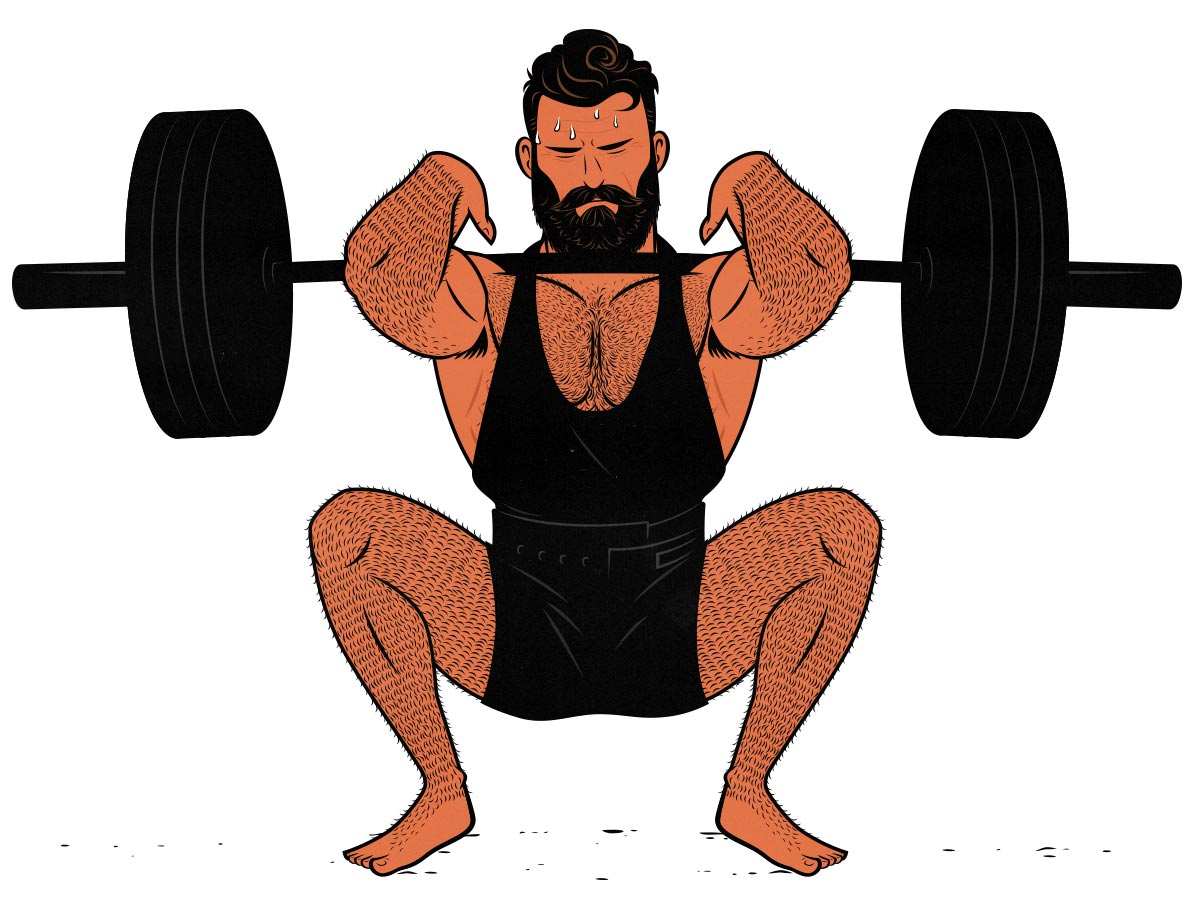
Day 1: Bench Day
| Exercise | Sets | Reps |
|---|---|---|
| Bench Press | 4–5 sets | 6-12 reps |
| Dumbbell Rows | 3–5 sets | 8-12 reps |
| Skull Crushers | 3 sets | 10-15 reps |
| Pullovers | 3 sets | 12–15 reps |
Bench Day is built around the bench press or whatever big chest exercise you prefer. I like to use the dumbbell bench press, barbell bench press, or weighted dip. The chest press machine is another good choice.
You can superset the bench press with rows. I recommend bringing a heavy dumbbell over to the bench and doing 1-arm rows, but you can use any row variation that doesn’t tire out your spinal erectors. The t-bar row machine is another great choice.
Skull crushers are an important part of building a bigger bench press. That’s why they’re here. They also ensure balanced growth in your triceps. When you finish them, you can use the same setup for doing pullovers.
If this workout feels too easy, you’re free to add an extra exercise. In our program, we let you toggle between easy/hard. The easy version has fewer exercises and sets. The hard version has more.
Day 2: Deadlift Day
| Exercise | Sets | Reps |
|---|---|---|
| Deadlift | 3 sets | 6-8 reps |
| Crunches | 3 sets | AMRAP |
| High-Bar Squat | 3 sets | 8-12 reps |
| Neck Curls | 3 sets | 12–15 reps |
Deadlift Day is built around the deadlift. I’ve always done sumo, Romanian, or conventional deadlifts here. Trap-bar deadlifts are great as well. Here’s an article going over the differences.
The squat is a good assistance exercise for the deadlift, but it’s mainly here to support your front squat. I like low-bar or high-bar squats here because they’re hard on your quads without being as demanding on your spinal erectors (which are probably tired by now).
Crunches and neck curls are discretionary exercises that superset well with the bigger exercises. You could just as easily choose calf raises and leg curls.
Day 3: Press Day
| Exercise | Sets | Reps |
|---|---|---|
| Overhead Press | 4–5 sets | 6-12 reps |
| Pull-Ups | 3–5 sets | AMRAP |
| Dips | 3 sets | AMRAP |
| Dumbbell Curls | 3 sets | 10-15 reps |
| Forearm Curls | 3 sets | 12–15 reps |
Press Day is built around an overhead press variation. I like the standing barbell “military” press. The push press is another great option. If you’re especially eager to build a big bench press, you could even do a close-grip bench press here.
If you’re doing your pressing in a power cage, you’ll have a pull-up bar handy. Pull-ups superset well with presses. Dips and dumbbell curls can be supersetted together, too. Forearm curls are a discretionary lift you can replace.
This combination of presses, pull-ups, and dips is my favourite combo for building a bigger shoulder girdle. I love this workout day.
Day 4: Squat Day
| Exercise | Sets | Reps |
|---|---|---|
| Front Squat | 4–5 sets | 6-12 reps |
| Hanging Leg Raises | 3–4 sets | AMRAP |
| Romanian Deadlift | 2–3 sets | 8-15 reps |
| Neck Curls | 3 sets | 12–15 reps |
Squat Day is built around the squat. I like the front squat here because it challenges our quads, glutes, and spinal erectors, making it a great assistance exercise for the deadlift. You could also choose a high-bar squat or leg press. If you’re squatting in a squat rack, you’ll have a pull-up bar handy, allowing you to superset leg raises.
The Romanian deadlift is next. It’s a great assistance exercise for the deadlift, and it’s great for bulking up your hamstrings and back. I like using a higher rep range here. I superset them with neck curls, but you can superset them with any small isolation exercise.
Day 5: Chin-Up Day
| Exercise | Sets | Reps |
|---|---|---|
| Weighted Chin-Ups | 4–5 sets | 5–8 reps |
| Push-Ups | 3–5 sets | AMRAP |
| Barbell Curls | 3 sets | 10-15 reps |
| Overhead Extensions | 3 sets | 10-15 reps |
| Lateral Raises | 3 sets | 12–15 reps |
Chin-Up Day is built around the weighted chin-up. Underhand, neutral-grip, and gymnastic-ring chin-ups do a better job of bringing your arms into the exercise, allowing you to go heavier. You can superset them with push-ups. You can raise your feet to make the push-ups more challenging.
Barbell curls and overhead extensions are next, supersetted together. I use an angled curl bar for both, using the same load for both exercises, bringing all sets to the cusp of failure. You can add lateral raises to the superset, turning it into a giant set.
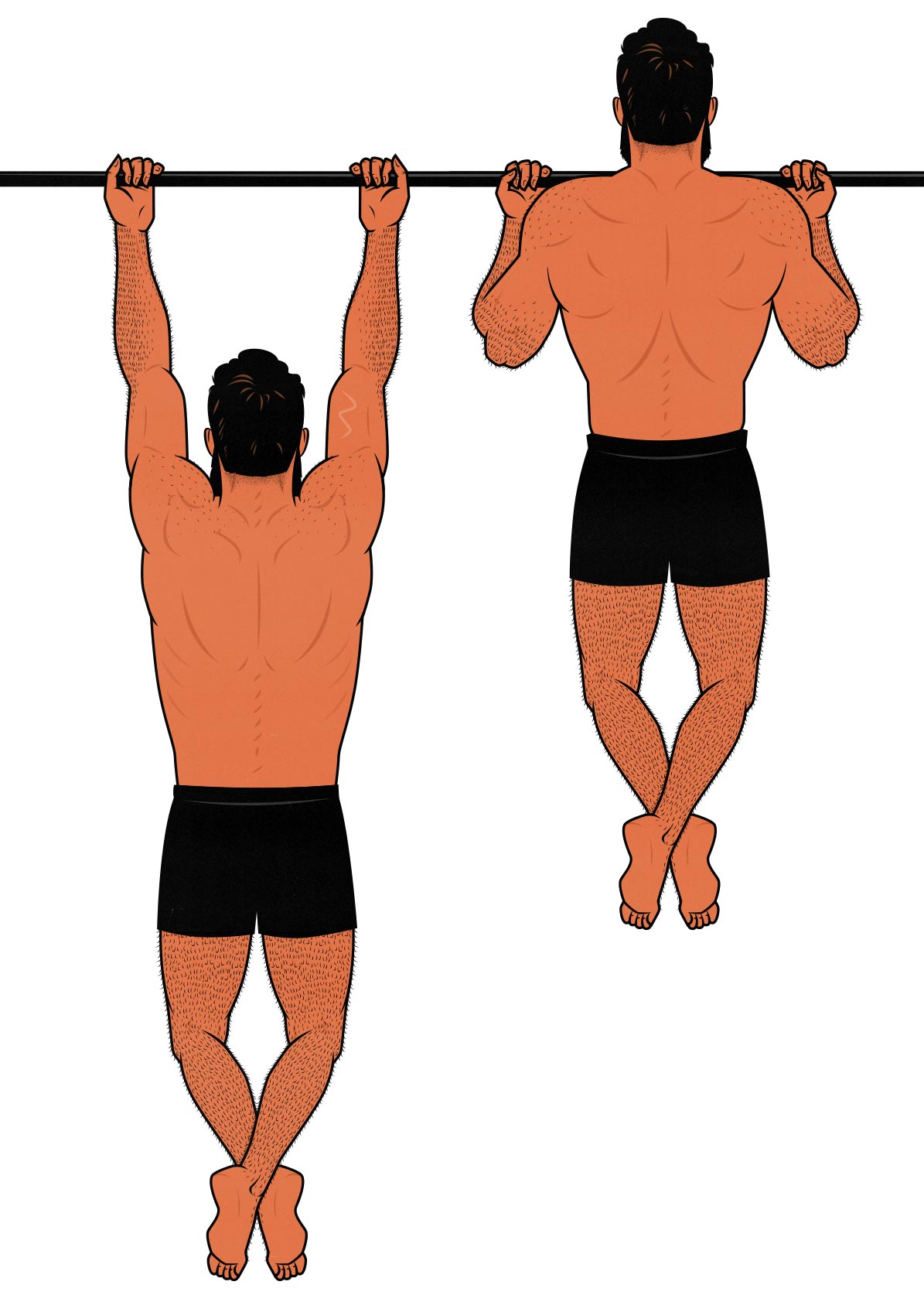
Customizing the Workouts for Strength
If you want to gain more maximal strength, you can start your workouts with a little Post-Activation Potentiation (PAP). I got this trick from Greg Nuckols, a world-record-holding powerlifter. You do progressively heavier warm-up sets until you’re lifting about 110% of the weight you’ll use in your first working set. Do 2–3 heavy reps, stopping 2–3 reps shy of failure. Lift explosively, using your full strength to accelerate the weight through the bottom of the range of motion.
Your muscles prefer to ration their energy. They hold back, saving some of their strength for later. The idea with these heavy warm-up sets is to contract your muscles as powerfully as you possibly can, teaching your muscles how to fully engage for an all-out surge of effort.
Do one of those heavy warm-up sets, rest for 3 minutes, then begin your first working set. The weight should feel a bit lighter than usual.
Next week, add 5 pounds to that heavy warm-up set.
Customizing the Workouts for Athletic Performance
If you want to become a faster runner, start your lower-body workouts with a few sets of sprints. Not all sports involve running, but many of them do. When Marco was working with professional football and rugby players, they needed to get faster as they got bigger, so he’d start their lower-body workouts with sprints.
Start by doing 4 sets of 10-metre sprints, with a minute of rest between each set. Rest for 3 minutes after the final set, then start your lower-body workout.
If you’re familiar with this type of training, start with 4 sets of sprints with falling starts, rest for 3 minutes, then do 4 sets of sprints with push-up starts. Rest for another 3 minutes, then start your lower-body workout.
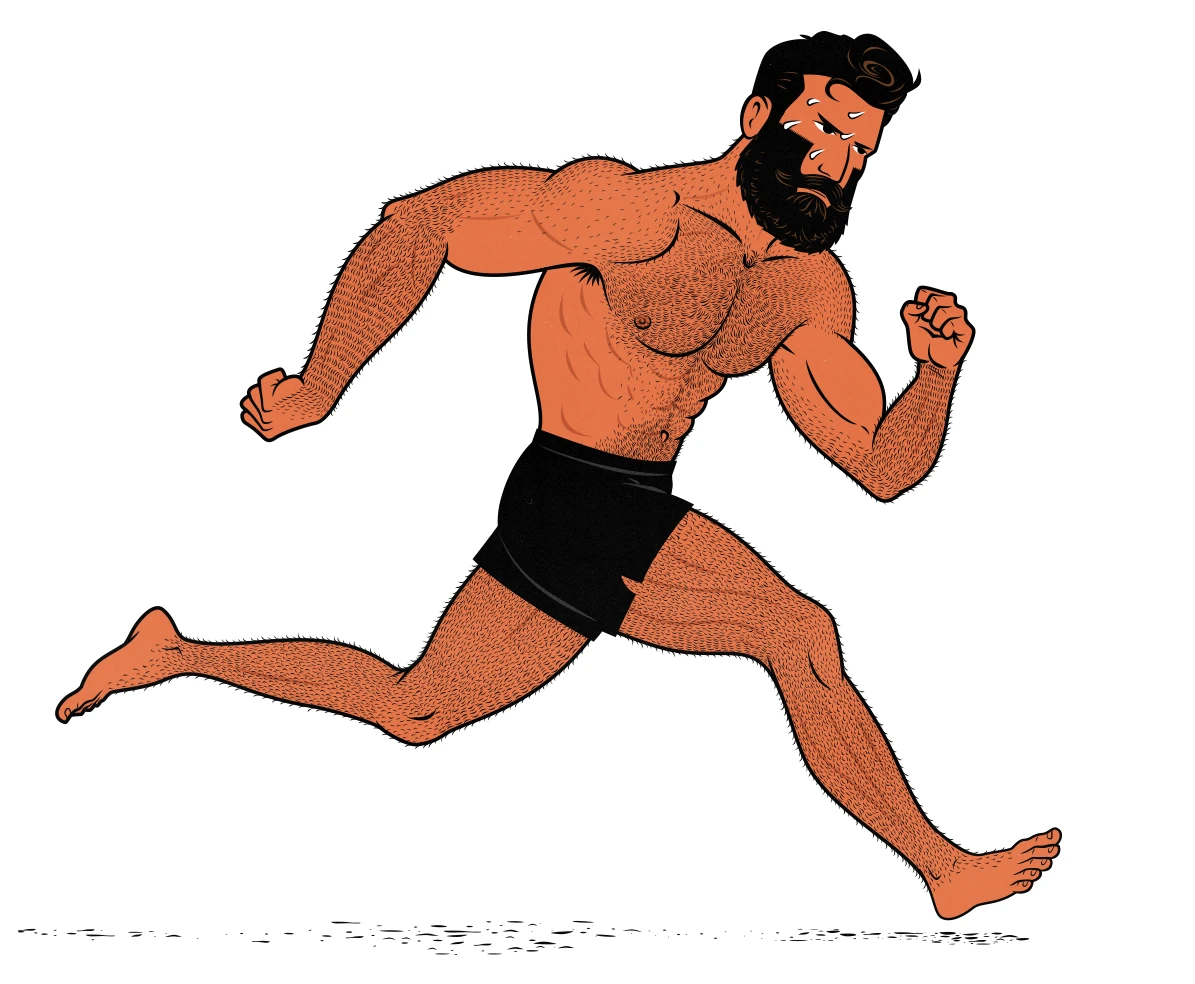
Workout Guidelines
Upper/Lower Splits are part of the strength training tradition, where you build muscle in a way that makes you bigger, stronger, and more athletic. That means focusing on progressive overload, getting enough rest between sets, and lifting with an explosive tempo.
- Volume: We have 4–5 exercises for 3–4 sets. Feel free to add or remove exercises and sets.
- Progression: Try to get gradually stronger at the bigger exercises. In the 4-day routine, that means fighting to add weight on heavy days. In the 5-day routine, that means giving your best effort to the first exercise of each workout.
- Rest times: If you’re supersetting the exercises, rest for 2 minutes between sets. If you aren’t supersetting, rest for 3–5 minutes between sets. Use shorter rest times for the smaller exercises.
- Reps in Reserve: Leave 2–3 reps in reserve on your heavier exercises. Leave 1–2 reps in reserve on your smaller exercises. You can take the final set of each exercise to the cusp of muscle failure.
- Tempo: Try to lift the weights explosively, accelerating them through the beginning of the range of motion. Lower the weights slowly and under control. Give each rep your full effort.
- Diet: You need enough food to fuel muscle growth. If you’re skinny-fat or overweight, you can recomp, getting the extra energy from your body fat. If you’re thin or lean, you’ll need to bulk.
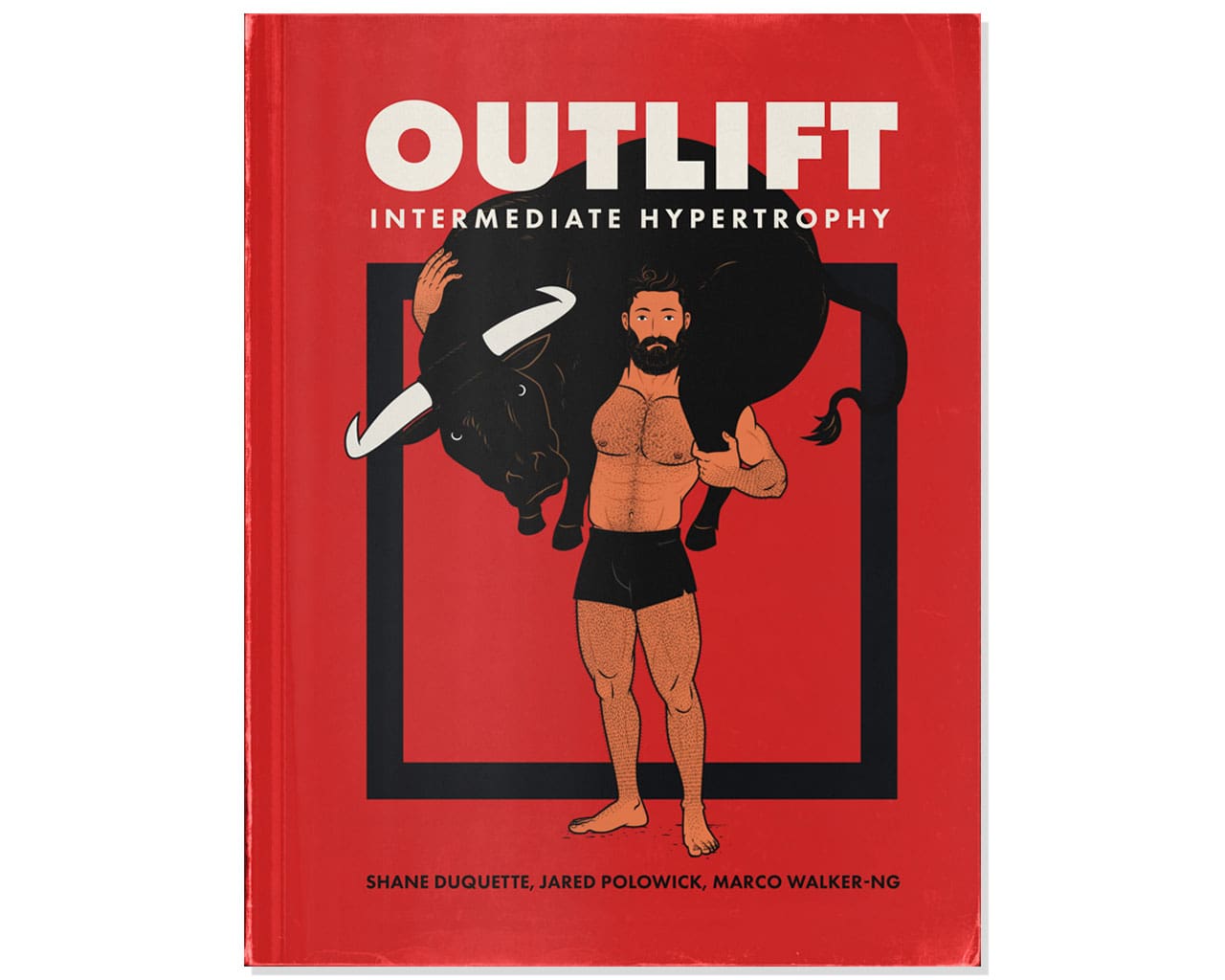
If you want a fully optimized 5-day upper/lower workout split, check out our Outlift Intermediate Hypertrophy Program. It’s a 15-week customizable workout routine with guided progressive overload. It also comes with a full hypertrophy training guide. I think you’d really like it.



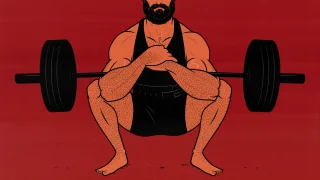
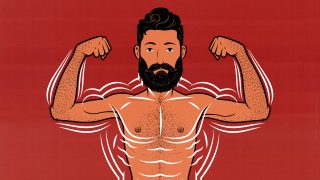

This was a super helpful article. Thanks, guys!
I have one quick question:
Do you think that DLs and Back Squats hit the calves sufficiently for hypertrophy or would you add in about ten sets of calf raises/week? Maybe five standing and five sitting?
DGW
Thank you, Derrick. My pleasure!
If you want bigger calves, best to train them directly. I’ve been squatting and deadlifting for over a decade, and I’ve gained almost 70 pounds, and my calves are still 14 inches.
10 sets of calf raises per week is good. I would do them all standing (and with a deficit). You’ll train your calves at longer muscle lengths that way. But seated is fine if you prefer it. The differences wouldn’t be huge, and seated calf raise machines are usually good for creating a deficit.
Thank you for getting back to me so quickly. I appreciate your website so much. Also, whoever does your artwork of the dude working out… tell them I really like the work. It’s always immediately obvious to me which site I’m looking at because of him.
DGW
I do the art myself. Thank you so much.
Hello Shane, I hope you are doing well. It seems that I can use a barbell row or pullover instead of a pull-up routine because I am not able to perform these movements correctly. Also, I am in a home club and I have limited equipment. Thank you for the site and the routine.
Hey Amir,
Pull-ups and chin-ups are great for the lats. Rows can be, too. You can build a big back by doing more rows, yep!
Pullovers are better for the teres major than the lats, but the teres major is important, too.
I’m not sure why you can’t do pull-ups and chin-ups correctly. There are ways to get better at them, but I’m not sure what the issue is.
Hi, I’ve enjoyed reading your articles. Question. I won’t consider myself an intermediate but I have some experience with lifting. Will I be able to scale the 5 day upper/lower program to suit a beginner by reducing the volume overall? I like the concept of progressing 1 main exercise of the big 5 each session.
Hey Paul, yep!
You can do fewer sets and exercises per workout, training with a moderate volume. It will work great. Our Outlift Program let’s you toggle between easy and hard mode. The 5-day easy routine has the easiest workouts, since the work is spread over so many days. The hard version takes the other approach, using it as an opportunity to train with high volumes.
It’s a really fun way of training, and it’s great for gaining muscle and strength. I think you’ll really like it 🙂